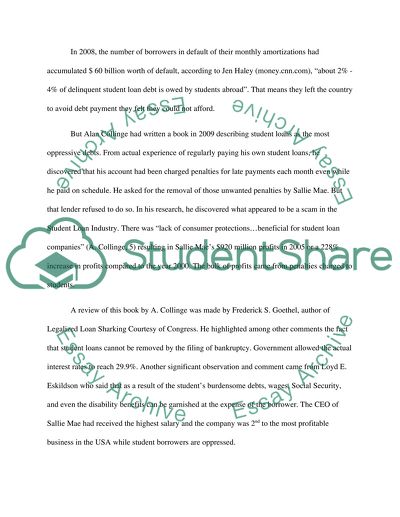Cite this document
(“Student Loans: Malpractices. Frivolous Lending, Helpless Lendees Research Paper”, n.d.)
Student Loans: Malpractices. Frivolous Lending, Helpless Lendees Research Paper. Retrieved from https://studentshare.org/journalism-communication/1448203-student-loans-mal-practices-frivilous-lending
Student Loans: Malpractices. Frivolous Lending, Helpless Lendees Research Paper. Retrieved from https://studentshare.org/journalism-communication/1448203-student-loans-mal-practices-frivilous-lending
(Student Loans: Malpractices. Frivolous Lending, Helpless Lendees Research Paper)
Student Loans: Malpractices. Frivolous Lending, Helpless Lendees Research Paper. https://studentshare.org/journalism-communication/1448203-student-loans-mal-practices-frivilous-lending.
Student Loans: Malpractices. Frivolous Lending, Helpless Lendees Research Paper. https://studentshare.org/journalism-communication/1448203-student-loans-mal-practices-frivilous-lending.
“Student Loans: Malpractices. Frivolous Lending, Helpless Lendees Research Paper”, n.d. https://studentshare.org/journalism-communication/1448203-student-loans-mal-practices-frivilous-lending.


